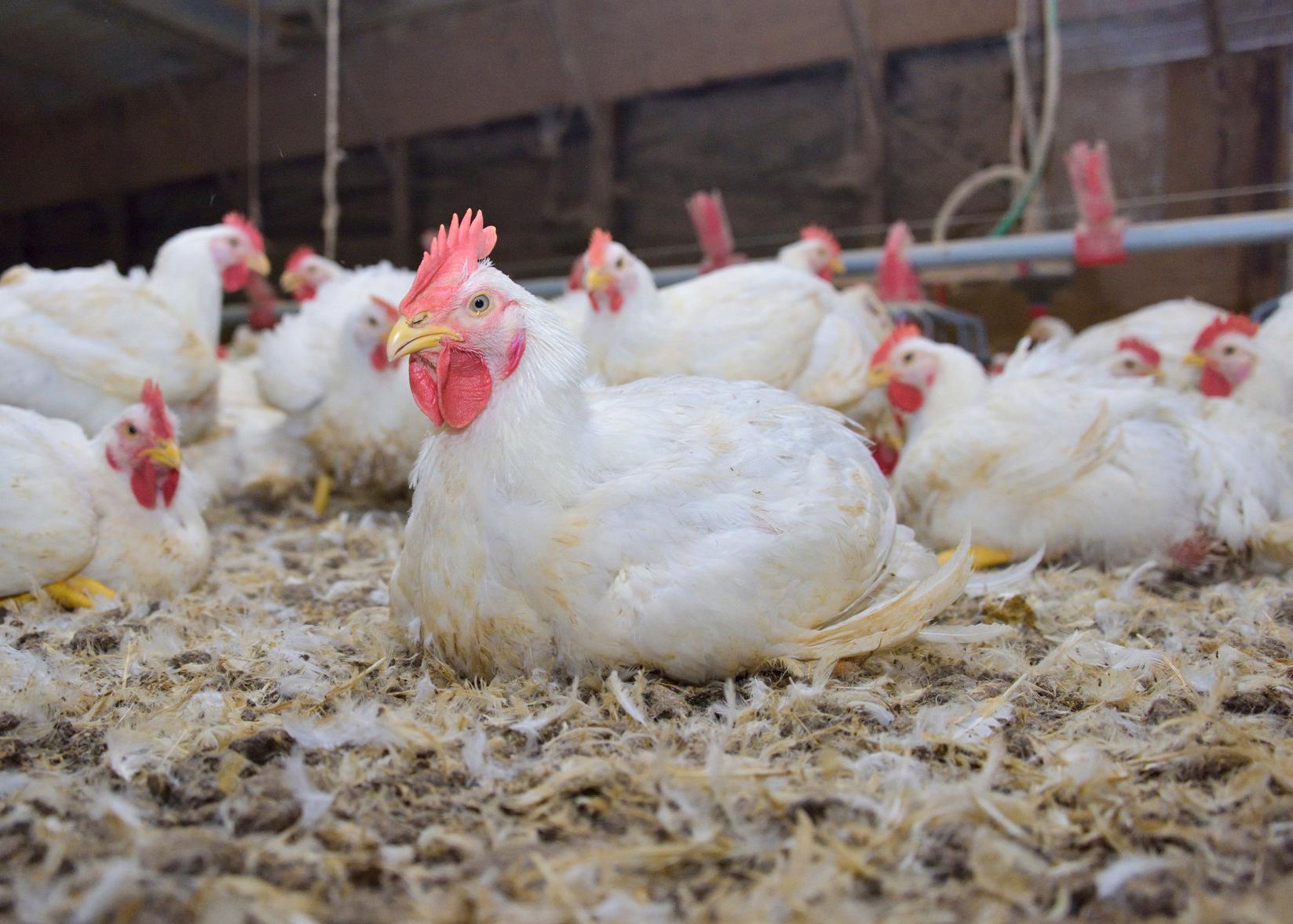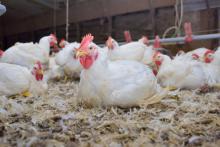Information Possibly Outdated
The information presented on this page was originally released on March 30, 2020. It may not be outdated, but please search our site for more current information. If you plan to quote or reference this information in a publication, please check with the Extension specialist or author before proceeding.
Existing biosecurity measures allow poultry industry operations
STARKVILLE, Miss. -- The strict biosecurity measures already practiced in Mississippi’s $2.7 billion poultry industry allow this “essential critical infrastructure workforce” to continue business as usual during the COVID-19 pandemic.
Mary Beck, head of the Mississippi State University Department of Poultry Science, said the U.S. Department of Homeland Security has declared poultry one of the food and agricultural businesses that must remain operational during the outbreak.
“The poultry industry is Mississippi’s largest agricultural sector, by far, and our department is strongly focused on providing timely and relevant science-based information that producers and growers can use in real time,” Beck said. “Our scientists are working hard in the areas of gut health, antibiotic alternatives, feed quality and vaccine development against a number of pathogens to help keep our food supply safe.
“COVID-19 is the most recent challenge faced by our industry; this one, though, is one that primarily threatens human lives,” she said. “In the face of this national crisis, the focus of the poultry industry is to continue to provide consumers with a steady supply of safe and nutritious protein. The Poultry Science Department will continue to do everything possible to provide timely and relevant assistance to Mississippi’s poultry industry, in this crisis as in earlier ones.”
Tom Tabler, poultry specialist with the MSU Extension Service, said the poultry industry has remained unchanged during the COVID-19 outbreak.
“Contract growers are still raising chickens on their farms, hatcheries are still hatching baby chicks, feed mills are still manufacturing and delivering chicken feed, processing plants are still processing chickens, and processed chicken is still being shipped and delivered to the grocery stores,” Tabler said.
He said the biosecurity measures poultry industry workers were already required to follow equipped this industry to better understand what Americans are being asked to do in efforts to limit the spread of this virus. The poultry industry has been practicing social distancing for years as part of their biosecurity measures.
“I did enough biosecurity talks for the industry in 2015 that I’m sure folks got tired of seeing me show up,” Tabler said. “However, since the avian influenza outbreaks in 2014–2015 and 2016–2017, the poultry industry has greatly increased biosecurity practices at contract farms, hatcheries, feed mills and processing plants.”
Among these safety measures are disinfectant foot baths at the entrance to every poultry house. In addition, birds are isolated from visitors and other birds. Growers and workers are asked to change clothes and boots if they leave the farm for any reason and then return.
“The steps and measures Americans are now being asked to follow to protect the human population are the same steps and measures the poultry industry has been asking of contract poultry growers and themselves for the past five years,” Tabler said.
Tabler said disease can spread among humans in close contact the same way it does among chickens.
“A commercial chicken house may have 20,000 birds inside in close quarters, similar to a city of that size or a crowded beach or congested park,” he said. “If one bird gets a respiratory infection, it can easily spread that infection to the birds closest to it, and pretty soon the whole house is sick.
“If that same commercial house were hypothetically divided into multiple pens, each separated by 6 feet, and one bird in one pen were to become infected, it’s likely that the others in the pen might get sick, but that others in more distant pens would not, unless the in-house biosecurity were really poor.”
Tabler said properly enforced social distancing has this same preventative effect for humans.
“There’s a lot human society could learn right now from the poultry industry’s everyday biosecurity practices that help keep the nation’s poultry flocks disease free,” he said.
These human measures include social distancing, keeping at least 6 feet from others, and frequent hand washing and hand sanitizing.
“I’m pretty confident that most of the people we see on TV crowded onto beaches and into parks are not contract poultry growers, because those folks know better,” Tabler said.
He said the poultry industry is doing everything possible to help things get back to normal as soon as possible.
“Some plants are processing chickens on Saturdays, while others are increasing supplies going to grocery stores and decreasing supplies going to restaurants since many restaurants are doing less business these days.
“The poultry industry continues to produce safe, affordable, high-quality chicken for the nation’s consumers while protecting and caring for the health and safety of all their employees and contract growers. This is business as usual because those are the same things they do every day,” he said.










